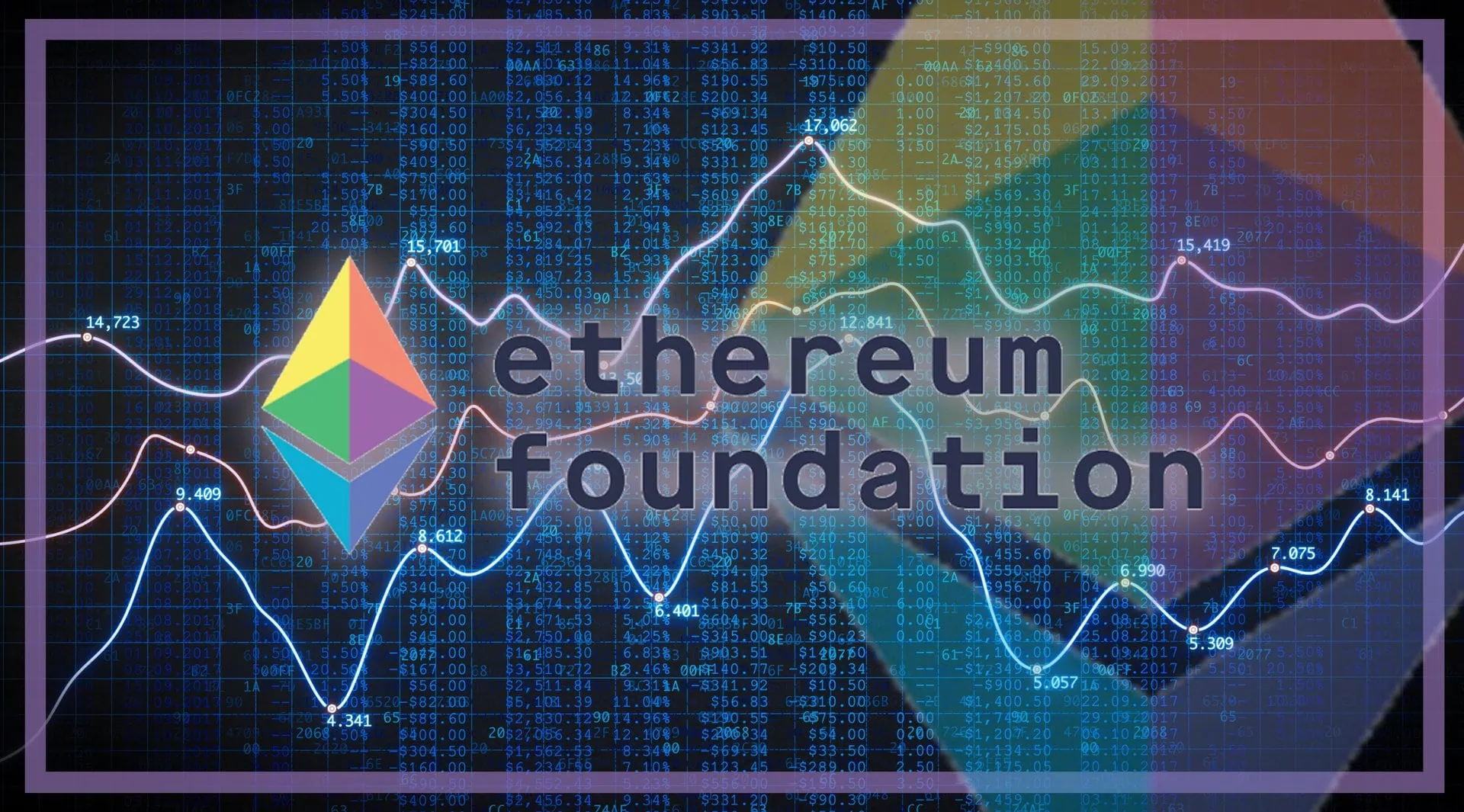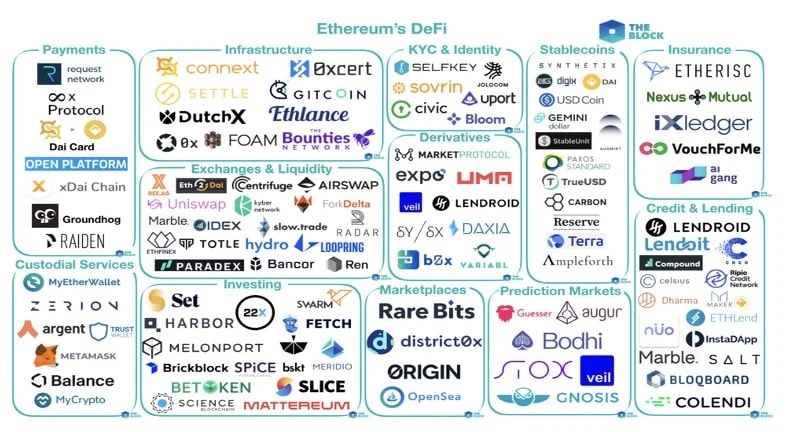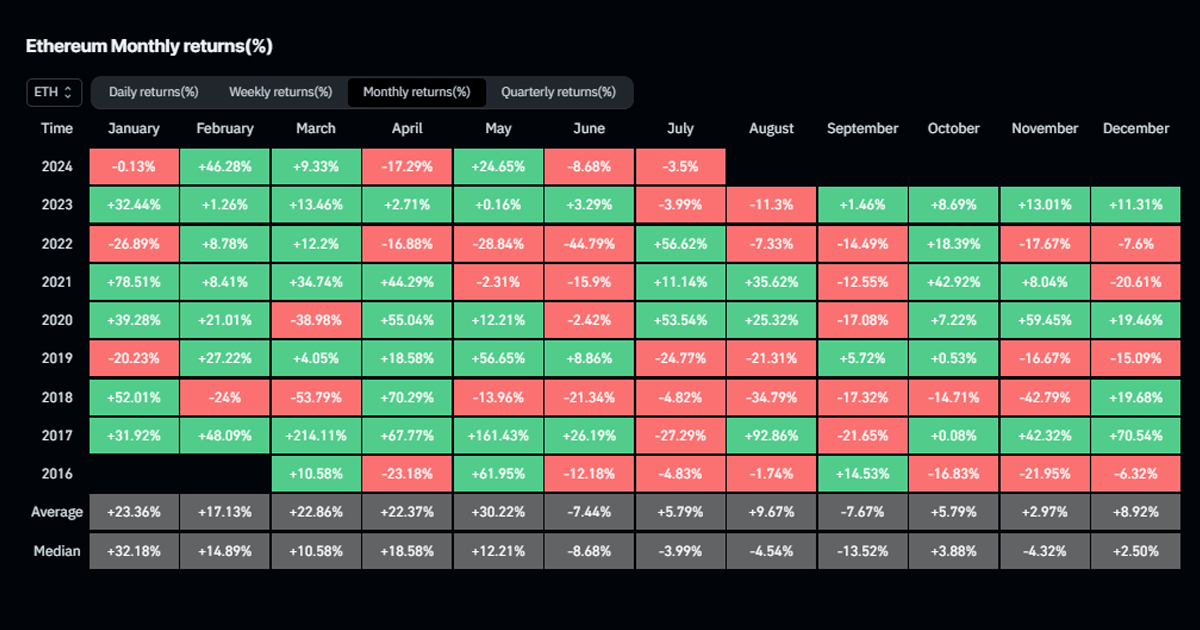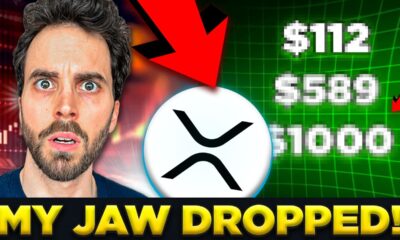Ethereum
What is the Ethereum Foundation?

THE[{” attribute=”” tabindex=”0″ role=”link”>Ethereum Foundation is a pivotal entity in the cryptocurrency sector. Founded in 2014, this Swiss-based non-profit organization has been the backbone of the Ethereum blockchain, spearheading its development and ensuring its sustainability. Ethereum, often described as the world’s programmable blockchain, owes much of its success and innovation to the efforts of the Foundation.
Ethereum Foundation: Company or Charity?
One common question is whether the Ethereum Foundation operates as a company or a charity or is the same organization as Ethereum.
The Ethereum Foundation (EF), also dubbed “Stiftung Ethereum,’’ established in 2014 in Zug, Switzerland, is not quite a company and not exactly what you’ll call a charity in the conventional sense, at least. Technically, it’s a non-profit organization that functions similarly to a charity, with a central mission: to shepherd the development and widespread adoption of Ethereum — the second-largest blockchain platform after Bitcoin — and the technologies surrounding it. However, its role extends beyond traditional charitable activities.
Mission and Goals: A Public Good for All
The EF’s mission is to secure a prosperous, decentralized, and enduring future for the Ethereum ecosystem.
If the Ethereum Foundation can be viewed as a public good entity that focused on harbouring & nurturing an early community of missionaries…
… then L2s can also be viewed as the new business development & partnership arm of Ethereum that brings in the next generation of Web2…
— Patrick McCorry (💙,🧡) (@stonecoldpat0) June 19, 2024
It’s not about leading or controlling Ethereum but nurturing its growth and supporting benevolent actors within the ecosystem. The EF’s goals are to maintain Ethereum as a public good — directed by none and useful for all. This includes funding research and development, supporting infrastructure, and fostering community growth.
Significance and Key Contributions of the EF to the Ethereum Ecosystem
sell 70,000 ETH, totaling, approximately, $100 million for the foundation. The Ethereum Foundation has helped ETH grow. Without the Ethereum
Foundation, ETH would be less successful. It was gifted ETH and it used it in order to fund
ventures to help promote itself and ETH.— John E Deaton (@JohnEDeaton1) January 6, 2021
The influence of the EF on the cryptocurrency environment is substantial. It dedicates resources to essential projects, benefiting developers and researchers devoted to enhancing Ethereum’s capabilities. The EF nurtures the ecosystem and champions positive contributors through grants, research endeavors, and programs like the Ethereum Fellowship, which focuses on untapped talent and areas ripe for blockchain innovation. It’s one part of a much larger ecosystem that serves as a catalyst for innovation within the Ethereum ecosystem.
The EF’s support extends to a broad scope of projects, including solutions for scalability, community building, security, privacy, and more. Here’s a breakdown:
Academic Grants:
The Ethereum Foundation endorses scholarly grants aimed at advancing research related to Ethereum. In its 2023 initiative, the foundation supported 43 projects spanning 20 nations, covering fields including cryptography, economics, security, and consensus mechanisms. These grants have helped advance knowledge, foster collaboration, and drive innovation within the Ethereum community.
Community Engagement:
The Ethereum Foundation actively engages with the community through platforms like GitHub and Discord.
Their efforts have increased contributions, with GitHub contributors rising by 57% and Discord community members nearly doubling.
Devcon Conferences:
Devcon, organized by the Ethereum Foundation since 2014, has become a premier event for enthusiasts, developers, and researchers. These conferences foster collaboration, knowledge sharing, and the birth of new ideas that drive Ethereum’s evolution.
what to expect as a Scholar: financial support, pre-Devcon community & programming, an amazing week at Devcon in Bangkok, and a post-Devcon learnings.https://t.co/FAwBYd90PM
— Deva the Devcon Unicorn (@EFDevcon) July 5, 2024
Ecosystem Support Program (ESP):
As an extension of the Ethereum Grant Program, ESP provides financial and non-financial support to projects within the Ethereum ecosystem.
By nurturing promising initiatives, ESP has contributed to the growth of decentralized applications, tools, and services in the past and present day.
Fellowship Program:
The Ethereum Foundation Fellowship Program aims to address gaps in representation across cultures, nationalities, and economic classes. It identifies and supports unique and talented individuals, breaking down barriers to entry for underrepresented people and communities in the Web3 space.
Impacts and Achievements
Through all the key contributions of the Ethereum Foundation highlighted above, the Ethereum ecosystem now boasts of many achievements and giant strides, with tens of crypto projects successfully executed and DeFi startups birthed under their belt. To list a few:
Decentralized Finance (DeFi):
Ethereum birthed DeFi, a movement that transformed traditional financial services. Notable platforms include:
- Uniswap, launched in November 2018, introduced automated market-making (AMM) and liquidity pools, enabling decentralized token swaps.
- Aave, founded in January 2020, pioneered flash loans and became a leading lending protocol.
- MakerDAO, established in December 2017, its DAI stablecoin provided stability in a volatile market.

Ethereum’s Robust DeFi. Source: The Block
By July 2024, DeFi protocols collectively held over $100 billion in Total Value Locked (TVL).
NFT Renaissance:
Ethereum’s smart contracts remodeled NFTs for the crypto industry. The Ethereum Foundation established NFT standards (ERC-721 and ERC-1155) that shaped the NFT ecosystem.
Scaling Solutions:
- Optimistic Rollups, introduced in 2022, enhance scalability by batching transactions off-chain and submitting proofs on-chain.
- Zero-knowledge Rollups (zk-Rollups), deployed in 2023, further reduce fees and improve user experience.
Eth2 Beacon Chain:
Proof-of-Stake (PoS) Transition: The Beacon Chain shipped on December 1, 2020, and formalized PoS as Ethereum’s consensus mechanism with The Merge, aka the “Shanghai Upgrade,” on September 15, 2022. During this event, Ethereum successfully switched from “Proof of Work” (PoW) to another system known as “Proof of Stake” (PoS). This change was a huge accomplishment because it significantly decreased the network’s energy, making the platform much more environmentally friendly. This marked the beginning of a new, more sustainable phase for Ethereum.
These contributions demonstrate the Ethereum Foundation’s commitment to advancing the ecosystem, which continues to grow in leaps and bounds to date.
The Names Behind the Ethereum Foundation
At the heart of the Ethereum Foundation is Vitalik Buterin, a prodigy in the crypto world. Alongside Vitalik, other key figures include Aya Miyaguchi, the Executive Director, and a team of dedicated developers and researchers who work tirelessly behind the scenes.
Vitalik Buterin
Ethereum co-founder Vitalik Buterin has significantly influenced the blockchain space, contributing to high-level roadmaps and technological advancements, including the Ethereum Improvement Proposal (EIP) 7702. His work has earned him recognition, such as a spot-on Forbes’ 30 Under 30 list in 2016.
Gavin Wood
Gavin Wood, co-founder of Ethereum and creator of Polkadot, invented Solidity and defined the Ethereum Virtual Machine (EVM) in 2014. He served as the Ethereum Foundation’s first CTO.
Dr. Gavin Wood appreciation tweet.
✅ Co-founder of Ethereum with Vitalik
✅ Proposed & helped develop Solidity language
✅ Released the Yellow Paper defining Ethereum Virtual Machine
✅ Founded Polkadot & the Web3 Foundation
✅ Donated $5.8 million in crypto to Ukraine pic.twitter.com/2ci4S407i2
— Hamza ⚡ Marmooz (@marmooznet) March 18, 2022
Ming Chan
Ming Chan, as the Executive Director of the Ethereum Foundation from 2015 to 2018, significantly improved the Foundation’s efficiency and reduced costs through reorganization. She also fostered relationships with academic groups like IC3.
Little known fact, #Ethereum owes it’s existence to @mingchan88, for keeping the Foundation afloat long enough to pass Swiss regulations and gain access to its genesis Ether. Without her, high chance the EF would have gone bankrupt before Ethereum‘s 1st birthday. https://t.co/x4G4b6N0TO
— Péter Szilágyi (karalabe.eth) (@peter_szilagyi) December 2, 2020
Aya Miyaguchi
Aya Miyaguchi, the current Executive Director of the Ethereum Foundation, leads its support for the Ethereum ecosystem through research, development, and education. She aims to preserve Ethereum’s open-source, inclusive, and permissionless nature.
Apart from Vitalik Buterin, Aya Miyaguchi, and co, there are several other key figures in the Ethereum Foundation and the Ethereum ecosystem, by extension, including the likes of Joe Lubin and Charles Hoskinson (both co-founders of Ethereum), Jeffrey Wilcke (as part of the Technical Steering Group), Patrick Storchenegger, and Jeremy Wood.
These individuals have made significant contributions to the Ethereum Foundation and the broader Ethereum ecosystem. Their collective efforts have helped shape Ethereum into the powerful and versatile platform it is today.
The Ethereum Foundation is a unique entity that blends the characteristics of a non-profit with the dynamism of a tech company. Under the leadership of visionaries like Vitalik Buterin and Aya Miyaguchi, it has made significant strides in advancing the Ethereum ecosystem. With ongoing projects and a clear vision for the future, the Foundation’s role in the crypto world is set to grow even more influential.
Author: Ayanfe Fakunle
The editorial team at #DisruptionBanking has taken all precautions to ensure that no persons or organisations have been adversely affected or offered any sort of financial advice in this article. This article is most definitely not financial advice.
Ethereum
QCP sees Ethereum as a safe bet amid Bitcoin stagnation

QCP, a leading trading firm, has shared key observations on the cryptocurrency market. Bitcoin’s struggle to surpass the $70,000 mark has led QCP to predict Selling pressure is still strong, with BTC likely to remain in a tight trading range. In the meantime, Ethereum (ETH) is seen as a more promising investment, with potential gains as ETH could catch up to BTC, thanks to decreasing ETHE outflows.
Read on to find out how you can benefit from it.
Bitcoin’s Struggle: The $70,000 Barrier
For the sixth time in a row, BTC has failed to break above the $70,000 mark. Bitcoin is at $66,048 after a sharp decline. Many investors sold Bitcoin to capitalize on the rising values, which caused a dramatic drop. The market is becoming increasingly skeptical about Bitcoin’s rise, with some investors lowering their expectations.
Despite the continued sell-off from Mt. Gox and the US government, the ETF market remains bullish. There is a notable trend in favor of Ethereum (ETH) ETFs as major bulls have started investing in ETFs, indicating a bullish sentiment for ETH.
QCP Telegram Update UnderlinesIncreased market volatility. The NASDAQ has fallen 10% from its peak, led by a pullback in major technology stocks. Currency carry trades are being unwound and the VIX, a measure of market volatility, has jumped to 19.50.
The main factors driving this uncertainty are Value at Risk (VaR) shocks, high stock market valuations and global risk aversion sentiment. Commodities such as oil and copper have also declined on fears of an economic slowdown.
Additionally, QCP anticipates increased market volatility ahead of the upcoming FOMC meeting, highlighting the importance of the Federal Reserve’s statement and Jerome Powell’s subsequent press conference.
A glimmer of hope
QCP notes a positive development in the crypto space with an inflow of $33.7 million into ETH spot ETFs, which is giving a much-needed boost to ETH prices. However, they anticipate continued outflows of ETHE in the coming weeks. The recent Silk Road BTC moves by the US government have added to the market uncertainty.
QCP suggests a strategic trade involving BTC, which will likely remain in its current range, while ETH offers a more promising opportunity. They propose a trade targeting a $4,000-$4,500 range for ETH, which could generate a 5.5x return by August 30, 2024.
Ethereum
Ethereum Whale Resurfaces After 9 Years, Moves 1,111 ETH Worth $3.7 Million

An Ethereum ICO participant has emerged from nearly a decade of inactivity.
Lookonchain, a smart on-chain money tracking tool, revealed On X, this long-inactive participant recently transferred 1,111 ETH, worth approximately $3.7 million, to a new wallet. This significant move marks a notable on-chain movement, given the participant’s prolonged dormancy.
The Ethereum account in question, identified as 0xE727E67E…B02B5bFC6, received 2,000 ETH on the Genesis block over 9 years ago.

This initial allocation took place during the Ethereum ICOwhere the participant invested in ETH at around $0.31 per coin. The initial investment, worth around $620 at the time, has now grown to millions of dollars.
Recent Transactions and Movements
The inactive account became active again with several notable output transactions. Specifically, the account transferred 1,000 ETH, 100 ETH, 10 ETH, 1 ETH, and 1 more ETH to address 0x7C21775C…2E9dCaE28 within a few minutes. Additionally, it moved 1 ETH to 0x2aa31476…f5aaCE9B.
Additionally, in the latest round of transactions, the address transferred 737,995 ETH, 50 ETH, and 100 ETH, for a total of 887,995 ETH. These recent activities highlight a significant movement of funds, sparking interest and speculation in the crypto community.
Why are whales reactivating?
It is also evident that apart from 0xE727E67E…B02B5bFC6, other previously dormant Ethereum whales are waking up with significant transfers.
In May, another dormant Ethereum whale made headlines when it staked 4,032 ETHvalued at $7.4 million, after more than two years of inactivity. This whale initially acquired 60,000 ETH during the Genesis block of Ethereum’s mainnet in 2015.
At the time, this activity could have been related to Ethereum’s upgrade known as “Shanghai,” which improved the network’s scalability and performance. This whale likely intended to capitalize on the price surge that occurred after the upgrade.
Disclaimer: This content is informational and should not be considered financial advice. The opinions expressed in this article may include the personal opinions of the author and do not reflect the opinion of The Crypto Basic. Readers are encouraged to conduct thorough research before making any investment decisions. The Crypto Basic is not responsible for any financial losses.
-Advertisement-
Ethereum
Only Bitcoin and Ethereum are viable for ETFs in the near future

BlackRock: Only Bitcoin and Ethereum Are Viable for ETFs in the Near Future
Bitcoin and Ethereum will be the only cryptocurrencies traded via ETFs in the near future, according to Samara Cohen, chief investment officer of ETFs and indices at BlackRock, the world’s largest asset manager.
In an interview with Bloomberg TV, Cohen explained that while Bitcoin and Ethereum have met BlackRock’s rigorous criteria for exchange-traded funds (ETFs), no other digital asset currently comes close. “We’re really looking at the investability to see what meets the criteria, what meets the criteria that we want to achieve in an ETF,” Cohen said. “Both in terms of the investability and from what we’re hearing from our clients, Bitcoin and Ethereum definitely meet those criteria, but it’s going to be a while before we see anything else.”
Cohen noted that beyond the technical challenges of launching new ETFs, the demand for other crypto ETFs, particularly Solana, is not there yet. While Solana is being touted as the next potential ETF candidate, Cohen noted that the market appetite remains lacking.
BlackRock’s interest in Bitcoin and Ethereum ETFs comes after the successful launch of Ethereum ETFs last week, which saw weekly trading volume for the crypto fund soar to $14.8 billion, the highest level since May. The success has fueled speculation about the next possible ETF, with Solana frequently mentioned as a contender.
Solana, known as a faster and cheaper alternative to Ethereum, has been the subject of two separate ETF filings in the US by VanEck and 21Shares. However, the lack of CME Solana futures, unlike Bitcoin and Ethereum, is a significant hurdle for SEC approval of a Solana ETF.
Despite these challenges, some fund managers remain optimistic about Solana’s potential. Franklin Templeton recently described Solana as an “exciting and major development that we believe will drive the crypto space forward.” Solana currently accounts for about 3% of the overall cryptocurrency market value, with a market cap of $82 billion, according to data from CoinGecko.
Meanwhile, Bitcoin investors continue to show strong support, as evidenced by substantial inflows into BlackRock’s iShares Bitcoin Trust (NASDAQ: IBIT). On July 22, IBIT reported inflows of $526.7 million, the highest single-day total since March. This impressive haul stands in stark contrast to the collective inflow of just $6.9 million seen across the remaining 10 Bitcoin ETFs, according to data from Farside Investors. The surge in IBIT inflows coincides with Bitcoin’s significant $68,000 level, just 8% off its all-time high of $73,000.
Ethereum
Ethereum Posts First Consecutive Monthly Losses Since August 2023 on New ETFs

Available exclusively via
Bitcoin ETF vs Ethereum: A Detailed Comparison of IBIT and ETHA
Andjela Radmilac · 3 days ago
CryptoSlate’s latest market report takes an in-depth look at the technical and practical differences between IBIT and BlackRock’s ETHA to explain how these products work.
-

 Ethereum12 months ago
Ethereum12 months agoEthereum Posts First Consecutive Monthly Losses Since August 2023 on New ETFs
-

 Regulation12 months ago
Regulation12 months agoCryptocurrency Regulation in Slovenia 2024
-

 News12 months ago
News12 months agoNew bill pushes Department of Veterans Affairs to examine how blockchain can improve its work
-

 Regulation12 months ago
Regulation12 months agoThink You Own Your Crypto? New UK Law Would Ensure It – DL News
-

 Regulation12 months ago
Regulation12 months agoUpbit, Coinone, Bithumb Face New Fees Under South Korea’s Cryptocurrency Law
-

 Regulation12 months ago
Regulation12 months agoA Blank Slate for Cryptocurrencies: Kamala Harris’ Regulatory Opportunity
-

 Regulation12 months ago
Regulation12 months agoBahamas Passes Cryptocurrency Bill Designed to Prevent FTX, Terra Disasters
-

 Regulation12 months ago
Regulation12 months agoIndia to Follow G20 Policy for Cryptocurrency Regulation: MoS Finance
-

 News1 year ago
News1 year ago“Captain Tsubasa – RIVALS” launches on Oasys Blockchain
-

 Ethereum1 year ago
Ethereum1 year agoComment deux frères auraient dérobé 25 millions de dollars lors d’un braquage d’Ethereum de 12 secondes • The Register
-

 News12 months ago
News12 months agoEU supports 15 startups to fight online disinformation with blockchain
-

 News1 year ago
News1 year agoSolana ranks the fastest blockchain in the world, surpassing Ethereum, Polygon ⋆ ZyCrypto












